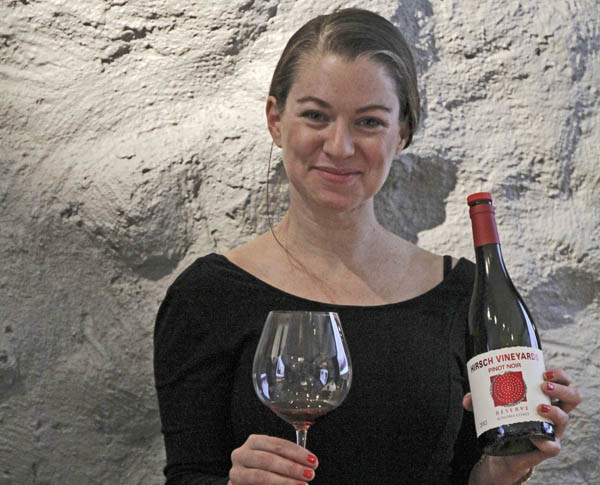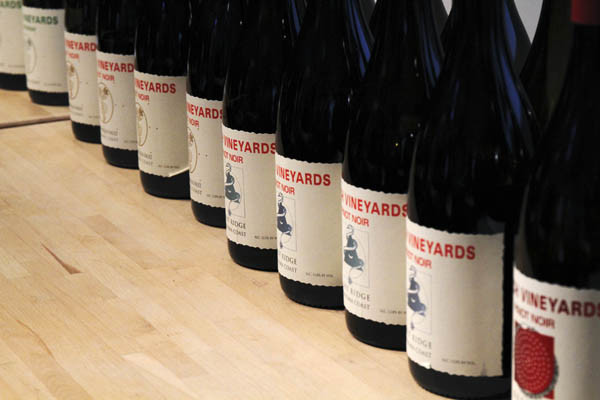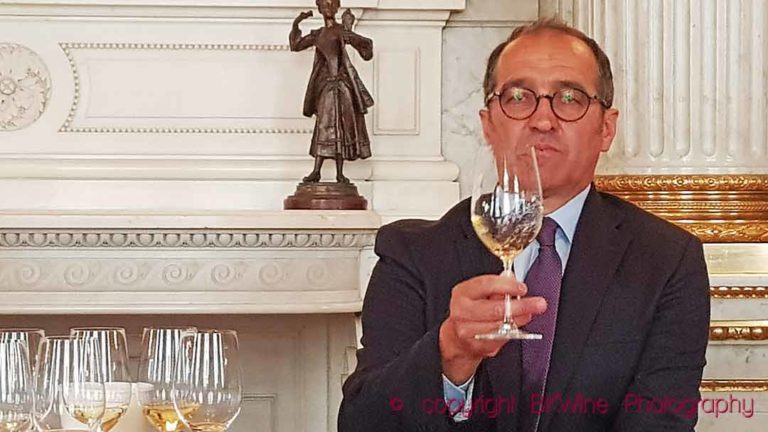David Hirsch was one of the first to plant wine in the coastal area of Sonoma County in the wine region known today as the Sonoma Coast overlooking the Pacific Ocean. The farm has nearly 30 hectares (68 acres) of cultivated land with pinot noir and chardonnay. It is a rolling landscape and although it is close to the coast the farm is at more than 400 meters altitude to get above the fog banks that come up almost every morning from the Pacific Ocean.
The rolling landscape, with many fine slopes to grow vines on, was created thanks to the proximity to the San Andreas Fault. The first vines were planted in 1980 and until 2001 all grapes were sold to other producers, most famous is William Selyem and Kistler. In 2002 Hirsch began to produce their own wines both pinot noir and chardonnay.
Before they began producing wine in the area there was only redwood forests and cattle and it was a relatively poor area. It has a very diverse climate, however, the proximity to the sea makes the temperature reasonably stable but it can still vary widely.
The vines are grown in small plots where David has mapped the soil in detail and then decided what was to be grown. They use primarily Guyot with double wires to tie up the vines. There are plans to further expand cultivation so we will see more of Hirsch’s wines in the future. All cultivation is biodynamic.
Jasmine Hirsch, who is the daughter of David, was in Stockholm recently and presented Hirsch’s new wines and a vertical tasting of the latest vintages at Johan Lidby Vinhandel, their importer.

The Chardonnay grapes are of very mixed sizes due to the relatively cold climate, but this does not affect the result. Chardonnay wines go through malolactic fermentation to 100% and are aged in French oak barrels for 12 months, including 15% new barrels. After a few more months on tank the wine is bottled. The two wines I tasted were a 2012 and a 2013. Both had a nose with butterscotch and yellow apples and a taste with a lot of minerals, oak and some more exotic fruits with good acidity. Very balanced and without the excesses that sometimes American chardonnay can have. They were more like a Burgundy. The difference between vintages was, in my opinion, very small.
The majority of pinot noir wines are named after the San Andreas Fault and consists of a blend from several plots. Other pinot noir wines are made from a limited number of plots and are named after the areas where they were grown. They make an additional category of wines where the best wines from a specific year are blended to make a “reserve” wine.
They like to call themselves a “micro wine producer” because they always try to be small-scale. For instance, they ferment each parcel separately and only make the blend after some vat ageing. After fermentation all pinot noir is aged in French oak barrels, with 30% new oak, for 20 to 22 months.

The San Andreas Pinot Noir wines I tasted were from 2010, 2011, 2012, and 2013. They all had a high fruity acidity with distinct barrel character with hints of strawberries and raspberries and a whiff of pepper. 2012 was a little more closed than the others and can be aged longer, but all have great aging potential. Pinot Noir Westridge 2012, 2013 and Eastridge 2012, 2013 were fruity and with less pepper in the aroma and soft tannins, probably due to the selected plant from where the grapes came. Reserve Estate 2012 was very balanced with some acidity and soft tannins, definitely the best wine.
A selection of these wines are available in Sweden at Systembolaget and some more will be launched later this year. All the wines tasted were very good and reasonably priced although they do not come very cheap. Jasmine also mentioned that they are happy to receive visitors and I think it can be very interesting to see the farm and taste the wine on location and see the amazing scenery.
Peter Cronström writes on BKWine Magazine on wine tastings with wine merchants and importers.










